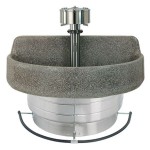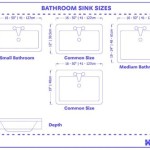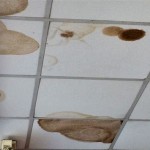How To Clean A Bathroom Drain: A Comprehensive Guide
Bathroom drains are frequently subjected to a constant barrage of hair, soap scum, toothpaste, and other debris. Over time, this accumulation can lead to slow drainage or, worse, a completely clogged drain. Maintaining a clean bathroom drain is crucial for preventing these issues and ensuring the efficient functioning of plumbing systems and a hygienic bathroom environment. This article provides detailed instructions and various methods for effectively cleaning a bathroom drain.
Identifying the Problem and Preparing for Cleaning
Before embarking on any cleaning procedure, it is important to accurately assess the severity of the drain blockage. A slow-draining sink may require a less aggressive approach compared to a completely clogged drain. Signs of a clogged drain include water pooling in the sink or shower, gurgling sounds emanating from the drain, and an unpleasant odor rising from the drain opening.
Regardless of the chosen method, proper preparation is essential. This includes gathering the necessary tools and protective gear. The following items are commonly required:
- Gloves: Protect hands from harsh chemicals and bacteria present in the drain.
- Safety glasses: Shield eyes from splashes and potential irritants.
- Old towels or rags: Absorb spills and protect the surrounding area.
- Screwdriver: May be needed to remove drain stoppers or covers.
- Plunger: Useful for dislodging minor blockages.
- Drain snake or auger: Effective for reaching deeper clogs.
- Baking soda and vinegar: A natural and effective cleaning solution.
- Boiling water: Helps to dissolve grease and soap scum.
Additionally, ensuring proper ventilation is crucial, especially when using chemical drain cleaners. Open windows and doors to allow for adequate airflow and minimize exposure to potentially harmful fumes.
Methods for Cleaning a Bathroom Drain
Several methods can be employed to clean a bathroom drain, ranging from simple home remedies to specialized tools and chemical solutions. The appropriate method will depend on the severity of the clog and the individual's comfort level with different cleaning approaches. The following outlines some common and effective cleaning techniques:
1. Manual Removal of Surface Debris
Often, the simplest solution is the most effective. The first step in cleaning a bathroom drain should be to manually remove any visible debris from around the drain opening. This includes hair, soap scum, and other visible obstructions. A small tool, such as a bent wire hanger or tweezers, can be used to carefully extract debris from the drain. It's crucial to exercise caution to avoid pushing the debris further down the drain.
Many bathroom sinks have a pop-up drain stopper. These stoppers are notorious for trapping hair and soap scum. Removing the stopper allows for direct access to the drain and simplifies the removal of accumulated debris. The method for removing a pop-up stopper varies depending on the specific design. Typically, it involves disconnecting a linkage rod located beneath the sink. Refer to the sink's instruction manual or search online for specific instructions for the particular model.
2. Using Boiling Water
Boiling water is an effective and environmentally friendly method for dissolving grease and soap scum that contribute to drain blockages. This method is best suited for minor clogs and is not recommended for use with PVC pipes, as the high temperature can potentially damage them. For metal pipes, carefully pour a kettle or pot of boiling water directly down the drain.
After pouring the boiling water, allow it to sit for several minutes to dissolve the blockage. Then, flush the drain with hot tap water to ensure that the debris is completely cleared. If the drain remains slow, repeat the process. It may be necessary to repeat the boiling water treatment several times to fully clear the blockage.
3. Baking Soda and Vinegar Solution
The combination of baking soda and vinegar creates a chemical reaction that can break down organic matter and dissolve clogs. This method is a natural and effective alternative to harsh chemical drain cleaners. Begin by pouring approximately one cup of baking soda down the drain, followed by one cup of white vinegar. The mixture will fizz and bubble, which is the desired effect.
Allow the baking soda and vinegar mixture to sit in the drain for at least 30 minutes, or preferably overnight for more stubborn clogs. This allows the chemical reaction to fully break down the blockage. After the waiting period, flush the drain with hot water to remove the dissolved debris. If the drain remains slow, repeat the process or try a different cleaning method.
4. Plunging the Drain
A plunger is a simple yet effective tool for dislodging minor clogs in bathroom drains. Ensure that there is enough water in the sink to cover the cup of the plunger. Create a tight seal around the drain opening with the plunger cup. Push and pull the plunger up and down vigorously for several minutes. This creates pressure that can dislodge the blockage.
After plunging for several minutes, remove the plunger and check if the water drains more freely. If the drain remains slow, repeat the plunging process. For sinks with an overflow drain, it is important to cover the overflow opening with a wet cloth or tape to create a stronger seal and maximize the effectiveness of the plunging action.
5. Using a Drain Snake or Auger
A drain snake, also known as a plumbing snake or auger, is a flexible tool designed to reach deeper into the drainpipe and break up or retrieve stubborn clogs. This tool is particularly useful for removing hair and other debris that have accumulated further down the drain. Insert the end of the drain snake into the drain opening. Rotate the handle of the snake to advance it further into the pipe.
As the snake encounters resistance, continue rotating the handle to break up the clog or to hook and retrieve the debris. Once the snake has reached the blockage and broken it up or retrieved it, carefully withdraw the snake from the drain. Clean any debris from the snake and dispose of it properly. Flush the drain with hot water to ensure that the debris is completely cleared. Repeat the process if necessary.
6. Chemical Drain Cleaners
Chemical drain cleaners are a powerful, but potentially hazardous, option for cleaning clogged bathroom drains. These products contain strong chemicals that can dissolve hair, grease, and other organic matter. However, they should be used with caution due to their corrosive nature. Always follow the manufacturer's instructions carefully and wear appropriate protective gear, including gloves and safety glasses.
Pour the recommended amount of chemical drain cleaner down the drain. Allow it to sit for the recommended time, as specified by the manufacturer. After the waiting period, flush the drain with plenty of cold water. Avoid using hot water, as it can react with the chemicals and produce harmful fumes. It is critical to emphasize that chemical drain cleaners should be used sparingly and only as a last resort, as they can damage pipes and pose environmental risks. Moreover, mixing different chemical drain cleaners can produce dangerous and potentially explosive reactions.
Preventative Measures for Maintaining Clean Drains
Preventing drain clogs is significantly easier and more cost-effective than dealing with a severe blockage. Implementing preventative measures can significantly reduce the frequency of drain cleaning and extend the lifespan of plumbing systems. The following strategies can help maintain clean and functional bathroom drains:
Use a Drain Strainer: A drain strainer is a simple and inexpensive device that fits into the drain opening and catches hair, soap scum, and other debris before they enter the drainpipe. Regularly clean the strainer to remove accumulated debris and prevent it from clogging the drain.
Flush the Drain Regularly: Periodically flushing the drain with hot water can help to dissolve grease and soap scum buildup. Run hot water down the drain for several minutes each week to maintain a clear drainpipe.
Avoid Pouring Grease Down the Drain: Grease is a major contributor to drain clogs. Never pour grease or oil down the drain. Instead, dispose of grease in a separate container.
Regularly Clean the Drain Stopper: Clean the drain stopper regularly to remove accumulated hair and soap scum. This will prevent debris from entering the drainpipe and contributing to clogs.
Use Enzyme-Based Drain Cleaners: Enzyme-based drain cleaners contain beneficial bacteria that break down organic matter without damaging pipes. These cleaners are a safer and more environmentally friendly alternative to chemical drain cleaners. Use them regularly to maintain a clean drainpipe.
By following these preventative measures, bathroom drains can be kept clean and free of clogs, ensuring the efficient functioning of plumbing systems and a hygienic bathroom environment.

3 Ways To Clean A Bathroom Sink Drain Wikihow

How To Unclog A Shower Drain Without Chemicals Diy Family Handyman

How To Unclog A Sink The Right Way

3 Ways To Clean A Bathroom Sink Drain Wikihow

How To Clean Bathroom Drain Shower

Best Ways To Clean Your Bathroom Sink Drain Yourself

How To Clean A Clogged Sink Remove Stopper

How To Clean Bathroom Drains Unclog Your Shower And Sink

Drain Cleaner And Opener Guide

Cleaning The Dirty Bathroom Sink Drain Organised Housewife
Related Posts







